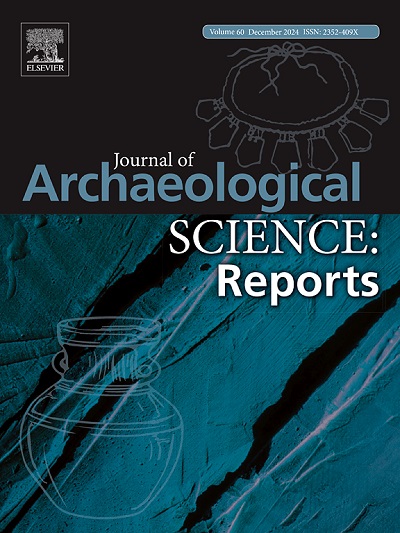Morphometric and aDNA study of charred plant remains found in the Monteverdi medieval castle, Civitella Paganico, Grosseto, Italy
IF 1.5
2区 历史学
0 ARCHAEOLOGY
引用次数: 0
Abstract
The castle of Monteverdi is a medieval settlement in central Italy, located on a hill that once controlled the communication routes between the Tyrrhenian coast and Mount Amiata. The remains of the castle’s walls cover the flat summit of a large ovoid ridge, enclosing a series of structures. The excavation focused on one of these areas, which was characterized by the presence of a small oven, revealing numerous charred carpological and xylological remains dating from the mid to late 12th century. These were subject of a multidisciplinary study, which included morphological, morphometric and genetic investigations, with the aim of obtaining information about human-environment interactions, particularly in relation to the exploited cereal grains. Traditional archaeobotanical analyses allowed us to identify a range of plants available at the site, such as cereals (mostly barley and naked wheats), pulses and weeds (represented by Lolium temulentum). Woody taxa correspond to the typical vegetation of Maremma (Tuscany, Grosseto, Italy). Subsequently, through geometric morphometry, the profiles of a selection of ancient and modern cereal of Triticum caryopses were extracted, and their average shapes were analyzed by comparing Euclidean and genetic distances. This allowed for the assessment of homologies and differences with some current cultivars of the same species. Finally, molecular analyses successfully applied to charred material made it possible to identify grains of Triticum aestivum/durum with genetic characteristics comparable to some accessions still cultivated in Italy today.
意大利格罗塞托奇维特拉帕加尼科蒙特威尔第中世纪城堡中烧焦植物遗骸的形态计量学和dna研究
蒙特威尔第城堡是意大利中部的一个中世纪定居点,坐落在一座小山上,曾经控制着第勒尼安海岸和阿米亚塔山之间的交通路线。城堡墙壁的遗迹覆盖着一个巨大的卵形山脊的平坦顶部,包围着一系列的结构。挖掘集中在其中一个区域,其特点是存在一个小烤箱,揭示了许多烧焦的人类学和木学遗迹,可追溯到12世纪中后期。这些都是一项多学科研究的主题,其中包括形态学、形态计量学和遗传学调查,目的是获得关于人与环境相互作用的信息,特别是与已开发的谷物有关的信息。传统的考古植物学分析使我们能够确定该遗址的一系列植物,如谷物(主要是大麦和裸麦)、豆类和杂草(以黑麦草为代表)。木本分类群对应于意大利托斯卡纳地区Maremma的典型植被。随后,通过几何形态测定法,提取了古、现代小麦(Triticum caryopses)的形态谱,并通过欧几里得距离和遗传距离的比较,分析了其平均形态。这允许评估同源性和差异与一些当前品种的同一物种。最后,成功应用于烧焦材料的分子分析使得鉴定出具有与今天仍在意大利种植的一些品种相当的遗传特征的小麦籽粒成为可能。
本文章由计算机程序翻译,如有差异,请以英文原文为准。
求助全文
约1分钟内获得全文
求助全文
来源期刊

Journal of Archaeological Science-Reports
ARCHAEOLOGY-
CiteScore
3.10
自引率
12.50%
发文量
405
期刊介绍:
Journal of Archaeological Science: Reports is aimed at archaeologists and scientists engaged with the application of scientific techniques and methodologies to all areas of archaeology. The journal focuses on the results of the application of scientific methods to archaeological problems and debates. It will provide a forum for reviews and scientific debate of issues in scientific archaeology and their impact in the wider subject. Journal of Archaeological Science: Reports will publish papers of excellent archaeological science, with regional or wider interest. This will include case studies, reviews and short papers where an established scientific technique sheds light on archaeological questions and debates.
 求助内容:
求助内容: 应助结果提醒方式:
应助结果提醒方式:


